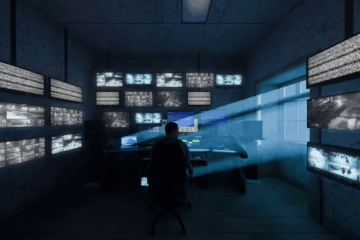It’s an MSP help desk emergency! What do you do?
From clients calling while everyone’s busy to data breaches, does your MSP know how to handle it? How well a company responds to emergencies can make-or-break an MSP’s relationship with their clients.
As the owner, you need to devise and implement a well-defined policy and procedure on what happens when a client has an emergency.
Here’s how you can, in three steps, successfully deal with emergencies in your MSP:
- Define what type of ticket you are dealing with by setting emergency thresholds.
- Have a dispatcher manage all tickets.
- Have a well-defined procedure in place to reach a timely and successful solution.
These steps will help you turn panic into order by having procedures in writing that are easily accessible to staff. You must define each member’s responsibility within a structured ticketing system. Finally, tracking workflow and updating the client regularly will ensure they feel cared for in their most vulnerable moment.
Let’s break these steps down further so that you can implement them in your MSP today!
Define the type of ticket
Not all tickets are created equal! That’s why the first step is to define which type of emergency threshold you’re even dealing with. Identity which requests ring all alarms in your MSP and must bring all hands on deck.
Once you’ve decided that, you are on a good track to successful crisis management.
This will then involve a ticketing system like Freshdesk or Connectwise so that tickets will be documented and tracked. This makes it easier to classify them and ensure an ownership-based approach to the issue.
Once you establish that, educate your staff to discern between the urgent and non-urgent requests.
Incoming requests can have varying emergency levels in regards to:
- Priority
- Response – the effort needed to find a solution
- Level of authority or expertise needed – skills or experience required by a technician, manager or CEO
The same way you guide your staff though successfully defining and dealing with emergency issues, you can do the same for your clients.
Empower and educate them on the best ways to contact you in accordance with the level of severity of their issue. Presenting them with various communication channels will set them up with consistent expectations for when they can expect a response as well as a resolution.
Use a table like the one below to set urgent communication expectations:
| URGENT | NOT URGENT |
| Chat | Video meeting booked in advance |
| Phone | |
| Email with ‘URGENT’ as the subject | Ticketing system |
Not all tickets have the same level of priority and they vary in the type of response needed to solve them, thus defining which tickets are in fact urgent is a must.
If you don’t do so, tickets end up being lost that should have received a better, more swift response.
Ensure procedures are followed by hiring a dispatcher
Any MSP with more than five technicians should have a dispatcher or a service coordinator.
As a remote staffing company for MSPs, we at Support Adventure have seen that the companies that have the smoothest running help desks are the ones with dispatchers, whether they hired one through us or already had one.
Dispatchers are so powerful because they handle the intake of tickets so that technicians don’t have to. They coordinate how tickets move through the system, ensuring procedures are followed.
Dispatcher are the backbone of any helpdesk and are invaluable when it comes to:
- Making sure tasks are completed
- Overseeing the timeliness of tickets getting resolved
- Checking in on tickets that are held up and moving them along
- Handling emergencies
- Coordinating the intake of calls and emails
- Making sure everything is documented correctly
Dispatchers keep the help desk working in synchronicity, creating a productive environment. If you have technicians answering calls as a ring group, that spell disaster for your MSP. Unlike a dispatcher whose role is dedicated to receiving client calls or emails, technicians multitasking can lead to tickets falling by the wayside due to cherry picking. Multitasking also leads to technicians being distracted, stressed out and not working at their full potential.
Now imagine being in a crisis in a ring group system without a dispatcher. It’s stressful just thinking about it. It’s much more productive to have a dispatcher. They’ll ensure accountability, consistency and unrestricted workflow.
You should also arm your dispatcher with the following best practices for emergency situations:
- Notify everyone in management and the executive level. Anybody who is a stakeholder in the company needs to be informed.
- Get your best tech on the issue immediately. An emergency like this can go through the triage techs, but you need to bring out the big guns ASAP to solve the problem.
- Ensure procedures are followed.
Procedures for MSP emergency handling
1 – Check in with customers every 30 minutes
Everybody at the company that is experiencing an emergency needs to be updated on it in 30 minute intervals. The dispatcher’s job is to maintain a correspondence with whomever they’re communicating with about the emergency.
2 – All hands on deck
When an urgent ticket comes in, there has to be an overwhelming response. The dispatcher, assigned technician and managers need to prioritize the issue and do everything they can to solve it.
If you do not have these procedures in place and do not follow them, then your MSP will lose clients!
3 – Do all you can do
You are the IT support company hired to help your clients in these kinds of situations.
Your response needs to be so calm and comforting that the client feels so good to be in your safe hands. Having an emergency incident response plan is key to following through in this regard. Make sure situations that trigger this response are clear to your dispatcher and frontline staff so that they can deliver the best emergency support a client could ever ask for.
If you are looking for the best remote MSP staff, check out our remote MSP staff page and start hiring today!
Need more guidance for implementing the best procedures for your MSP? We are happy to share more insights with you, Feel free to contact us to receive consultation and/or explore staffing options for dedicated remote technicians we have available.



1 Comment
MSP Advice: How to Support your MSP Clients’ Hybrid Workforce - Support Adventure · March 29, 2023 at 7:52 am
[…] how, in three steps, you can ensure that emergency escalations are in place to successfully deal with urgent problems in your […]